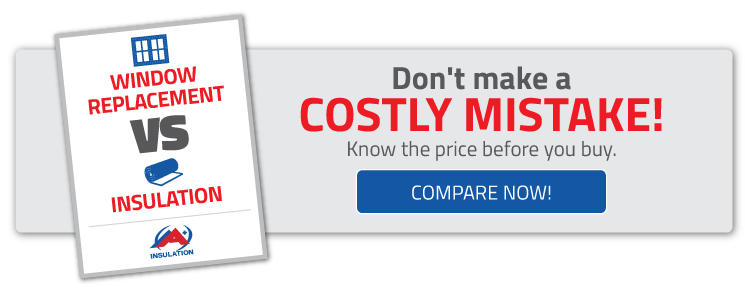
We Can Help Pinpoint Problem Areas
All homeowners want their home to be energy efficient, but pinpointing the problem areas is critical before taking action. At A+ Insulation, we have a way to do just that – during our home energy assessment (also called a home energy audit), we use a thermoscan camera to show you exactly where warm air is escaping. A home energy assessment is the only way to tell how much energy your home uses and where the problem areas are that are causing your home to be less energy efficient. Most importantly, an assessment will give you a clear visual picture of what problems to fix first to save you the most money on energy bills.
Related Read: Free Home Energy Evaluation, Why Wouldn’t You Have This Done?
What Is a Thermoscan Camera?
Thermoscan infrared cameras are designed to pick up on heat signatures from objects. There are several names for these devices including infrared (or IR) cameras, thermal imaging devices, and thermographic scanners. They produce images called thermographs that translate heat into color so it is visible to the human eye. Our trained specialists can use one of these cameras to locate insulation voids, air leaks, moisture intrusion, thermal bypasses, and thermal bridges.
How Do Infrared Cameras Work?
Although many people think infrared cameras measure surface temperatures, they actually measure the radiant energy emitted by the surface it is aimed at. Conditions must be right to have an accurate readings from a thermoscan. These things can all affect the accuracy of a thermoscan:
- Temperature-you need a minimum temperature difference of at least 18F° between the interior and the exterior of your home for several hours before the inspection begins. If the inside temperature is 70°F, the outside temperature should be below 52 degrees or above 88 degrees.
- Sunlight-sunlight warms exterior walls and roofs, complicating thermographic readings. Ideally, you don’t want any sun shining on the building for at least three hours before the inspection begins. If the house has a brick or stone exterior, the sun-free interval should be at least eight hours long. Early mornings are a great time to perform a scan.
- Moisture-Sunlight will warm moisture as well, making it appear on the thermoscan. When the sun shines on a roof, it heats up the roofing and the top of the insulation below. The insulation begins to cool after the sun sets. Damp insulation cools at a much slower rate than dry insulation, so wet spots will show up as warm spots where the roof is leaking when viewed at night through an infrared camera.
- Wind-wind speed can affect scan results so wind speed should be 8 mph or less.
Call the Experts for Your Free Home Energy Assessment
Almost anyone can point an infrared camera at a building, adjust the knobs and get pretty colors to appear, but it takes a trained and experienced expert to tell the difference between thermal bridging, air leakage, and moisture. The energy experts at A+ Insulation can give you a free home energy assessment and let you know where your home is “leaking” energy.
